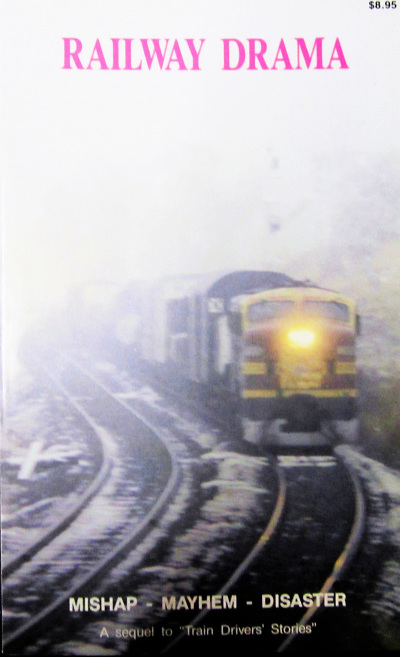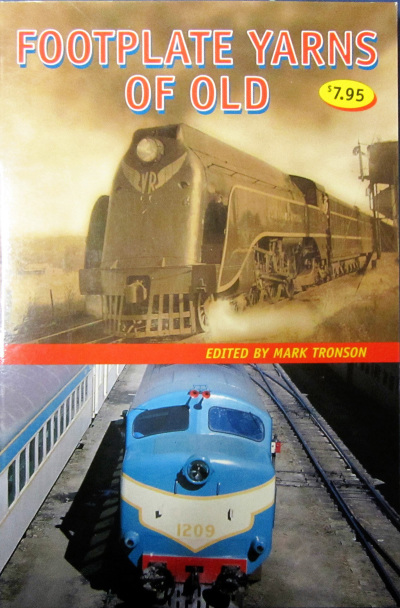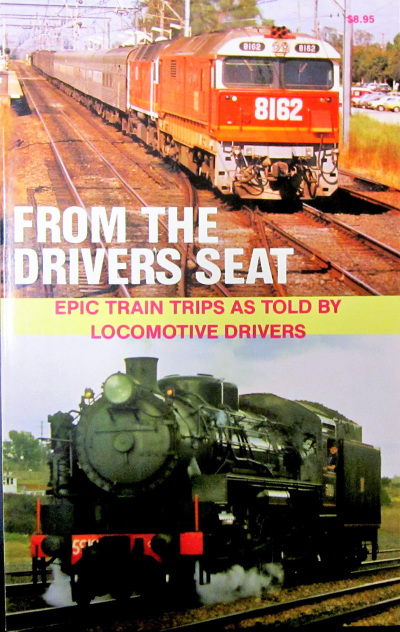
As I drive around the countryside, I get annoyed and quite frightened when cars drive too close behind me. Having been a train driver for 10 years, I have a really good feel for how long it can take a large piece of fast-moving metal to come to a stop.
In numerous of my Footplate Padre articles published in this space I have spoken from first hand experience as to how long a distance required to bring a train to a stand. The "distant signal" is sometimes 3-4 kilometres out from a station and that is often the point in which the first brake application is required.
Although a car is not as heavy as a train, drivers who drive too close on country and outer-suburban roads should really understand how easily they can rear-end the car in front, for example on wet, oily or sandy roads; when an animal suddenly appears; if the car in front slows or turns into a road they didn't notice; or if they are distracted by the radio or GPS. All sorts of events can happen in an instant when you are speeding along.
Even in the suburbs, when driving more slowly, there are unexpected events which require sudden braking. We all have our own stories of near misses when something unusual happened.
The numbers tell the story
The ACT Police have put out an online bulletin with calculations and diagrams, that tells the story better than I can in words. It is well worthwhile checking it out.
They present this scenario: "...You have a modern vehicle with good brakes and tyres. A child runs onto the road 45 metres ahead of you while you are travelling in a 60 km/h zone. You brake hard. Will you stop in time?"
They then give stopping distances and speeds at impact for 7 different speeds, in both dry and wet conditions. Here is what happens, if everything goes as well as possible, if you are travelling at 65 km/h.
** IN THE DRY – you will hit the child at 32 km/h. (You will stop in 51 metres).
** IN THE WET – you will hit the child at 45 km/h. (You will stop in 60 metres).
Imagine how much longer it takes to stop if you are travelling on a rural road at 80 km/h or more; and how far you should be behind the car in front.

The guidelines are different in different states
A long time ago when I got my licence, we were advised to leave 3 seconds between cars. This means that you watch the tail of the car in front pass a marker (a fence, a power pole or a white post beside the road), then you count "one thousand one, one thousand two, one thousand three" and only then (or later) should your bonnet be passing that same landmark.
The South Australian government guidelines still suggest three seconds. But the Queensland Department of Transport and Main Roads and the West Australian RAC (Royal Automobile Club) suggest two seconds, but double the distance in poor conditions.
Roads and Maritime Services in NSW now advises you to "keep a safe distance between your car and the car in front" without specifying what this might be, although the official NRMA blog (National Roads and Motoring Association) in 2013 recommended 3 seconds.
Maybe two seconds is enough in the city when traffic is crawling along slowly, where pedestrians and cars are controlled by lights and there are not usually animals or cars turning unexpectedly. But on the rural and semi-rural roads where I often drive, three seconds or more is safer, and less stressful for the others on the road.

And of course you know you would double the distance behind large trucks, heavy vehicles or people towing caravans because they have a much longer stopping-distance than a sedan. If you crash into one of these big boys, you will be the one who suffers the most. Once I followed a car for many kilometres on a winding, hilly road as it had its nose up the back of a horse float (which of course needed to go slower than the speed limit). This could have spelt disaster for all drivers and passengers in both cars, and the poor horse too.
Trying to give tailgaters the message!!
Frustratingly, tailgaters just don't get the message! They do not seem to understand that they are driving dangerously. I have lost count of the times I have flashed my brake-lights at them, flashed my emergency lights at them, and even found a safe spot to pull over and let them pass. Most of the time they pull back momentarily, then sidle up close behind again. Often they make rude gestures at me as if I am the one in the wrong. I have run out of strategies to let them know they are unsafe (and breaking the law)!
Then, if they do overtake (often on an unsafe or illegal spot), then I will see them race up close against the next car ahead. If we then get to an urban setting, I will see the tailgater next to me at the same set of traffic lights – the dangerous tactics didn't make the journey faster after all!
In the meantime, all we can do is be responsible for our own actions and stay 3 seconds or more behind the car in front – particularly on rural roads. We will get to our destination almost as fast. More importantly, we will get there, and so will they.
Proverbs 14 verse 16: "The wise are cautious and avoid danger; fools plunge ahead with reckless confidence"

Dr Mark Tronson - a 4 min video
Chairman – Well-Being Australia
Baptist Minister 45 years
- 1984 - Australian cricket team chaplain 17 years (Ret)
- 2001 - Life After Cricket (18 years Ret)
- 2009 - Olympic Ministry Medal – presented by Carl Lewis
- 2019 - The Gutenberg - (ARPA Christian Media premier award)
Gutenberg video - 2min 14sec
Married to Delma for 45 years with 4 children and 6 grand children